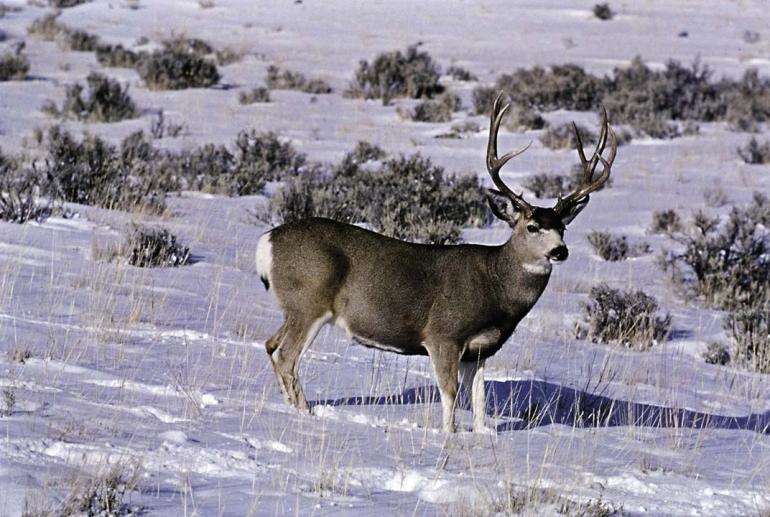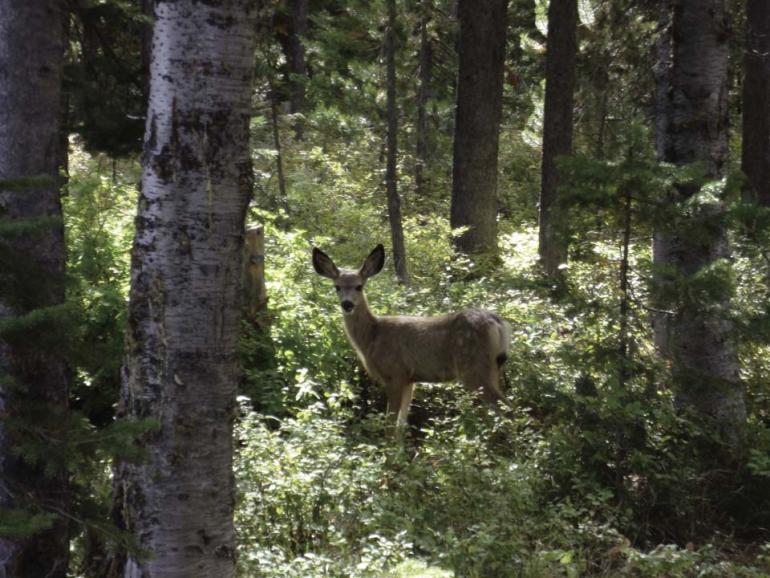Doh! A Deer
Deer season has arrived at last, and you’ve put in your time waiting and stalking. You finally have one in your sights—but do you know if it’s a whitetail or a muley? You should be able to tell the species almost instinctually before you pull the trigger.
Montana is graced with plenty of both species of deer. Whitetail deer (Odocoileus virginianus) tend to be a lowland species, living near river bottoms and farmlands. Mule (blacktail) deer (Odocoileus hemionus) favor uplands and forests, but may be seen in whitetail habitat and vice versa. Males of either species can weigh up to 400 pounds, while big females reach about half that weight; the average deer is considerably smaller.
At first glance, the most obvious difference between the two species is their ears. Nicknamed “mule ears” by none other than Lewis and Clark, mule ears are about twice the size of whitetail ears. When mules’ heads come up, their ears go up at the same time and immediately swivel toward whatever has startled them. Then, of course, you should check the tail—commonly seen as the animal is fleeing once you’ve missed your shot. Whitetails spread their light-colored tails into a fan shape and display it saucily for all to see. As you might guess, mule deer have a black tail—but only on the tip, or sometimes on top. The whiteish rump patch on the mule deer may throw you off, but look for the rope-like tail and the obvious black tip. Mule deer also tend to be darker and grayer in body color than whitetail deer. In the summer, whitetail coats have a reddish hue, while in the winter their coats tend to be blue-gray.
Antlers are another good identifying characteristic. Whitetail antlers form a basket shape and have one main beam with prongs branching upward and outward. Mule deer antlers fork, and then fork again if the deer is mature enough.
Additional identification tips can be found in the Montana Fish, Wildlife & Parks big-game hunting regulations. Good luck out there, and make sure you know what you’re aiming at.














